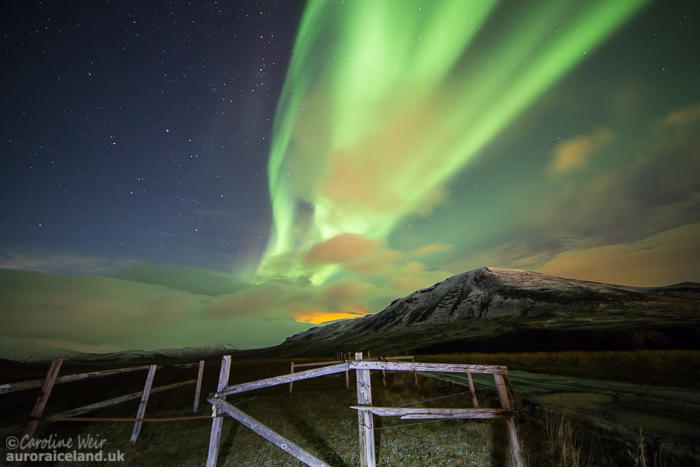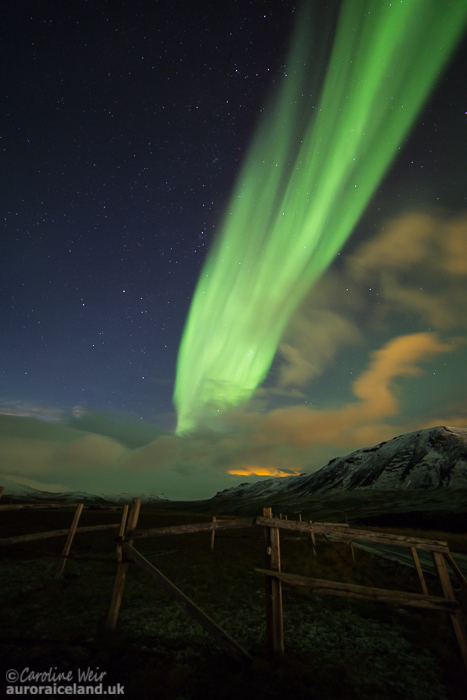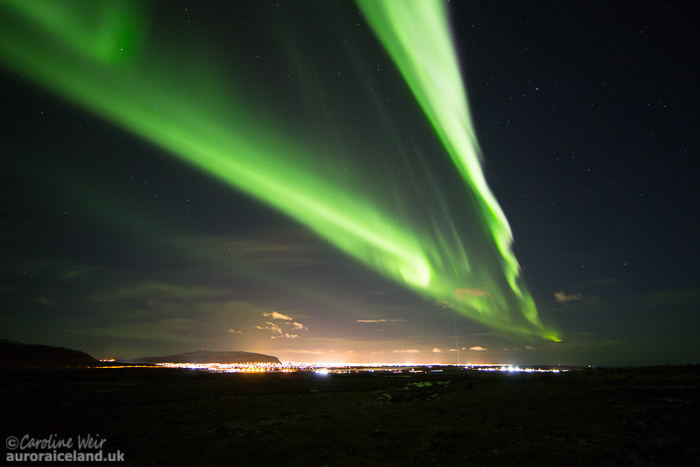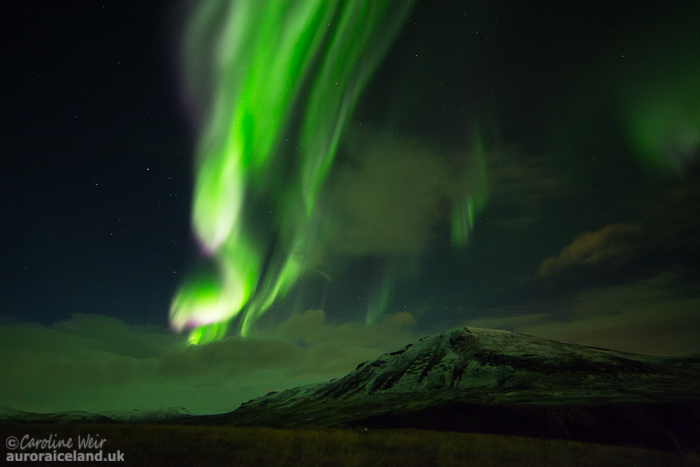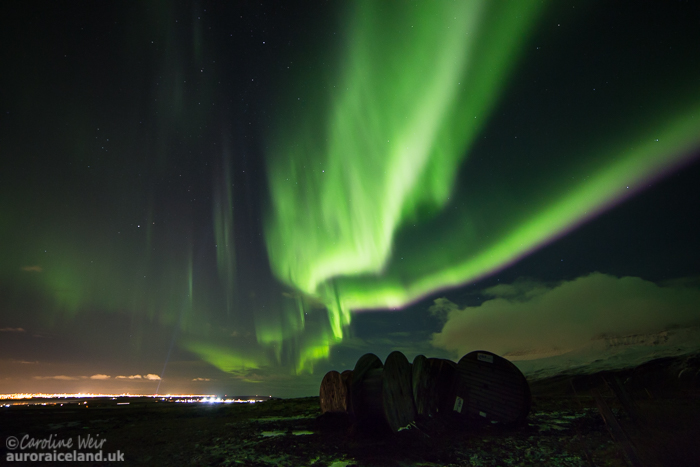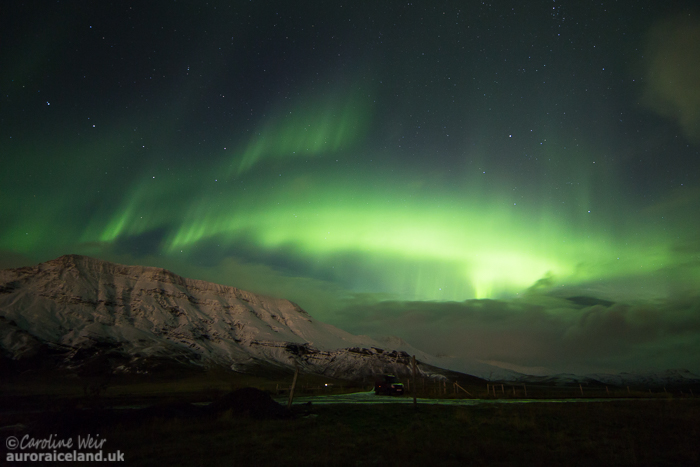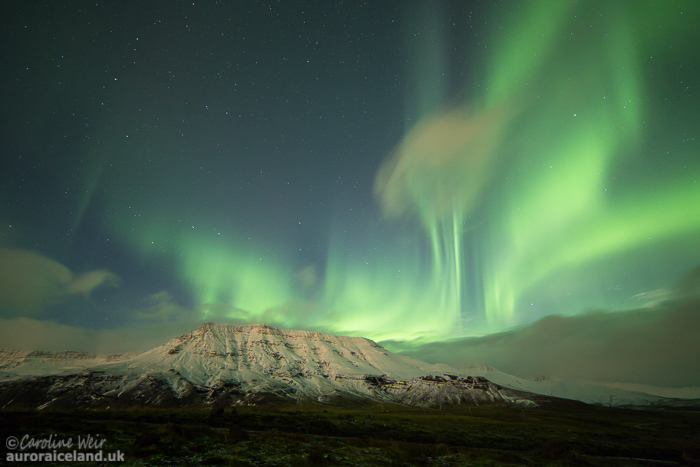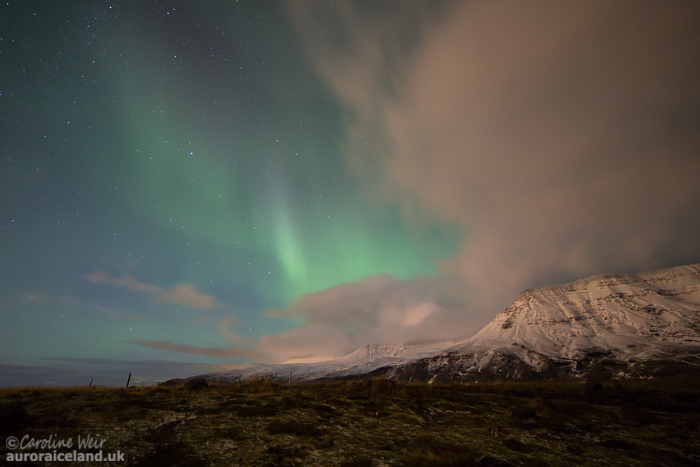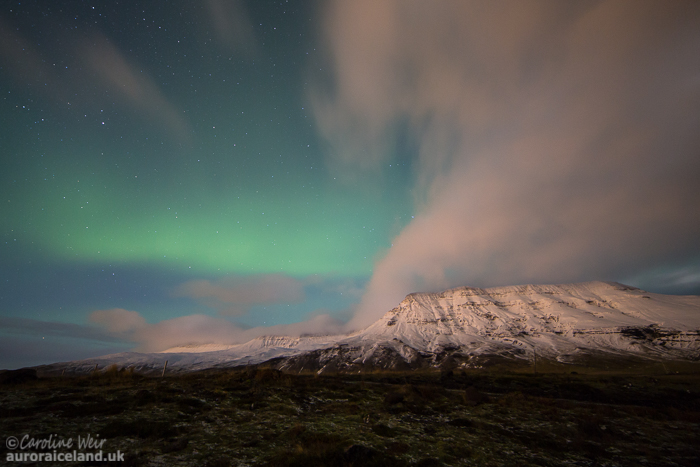There was a strong show of activity in the early part of the evening on 8th November, with a vibrant green arc already visible to 80 degrees height in the north by 20:45 UTC. The next hour brought one of the nicest displays of the season so far, with the aurora quickly strengthening and coming overhead in a thick swathe that was a very bright green to the eye. Further descriptions are provided with the images below. The first three images show the very bright green band just after 21:00 UTC that was directly overhead and was hanging in the sky from east to west without much spatial movement but with clear structure and vivid colour. Image 3 shows the western end of the auroral band, looking south-west towards Reykjavik. The aurora was sufficiently strong this evening to easily outshine the lights of the city!
From 21:22 to 21:28 UTC the aurora activity intensified, with the main band splitting into several rayed bands with bright pink lower fringes that were clearly visible to the naked eye. It was necessary to reduce the exposure of the images to around 1 second in order to capture the movement of the aurora at this time, and even despite this very low exposure time there are bright pinks and greens on the images that demonstrate just how bright the aurora was to the eye. There was also a lot of movement at this time, with curtains of rays flickering across the sky and a lot of changing shapes. As usual when the aurora moves this fast then it was a challenge to keep up with the camera and I was left feeling like I should have done better. Nevertheless, a breathtaking show to watch by eye. Images 4 to 11 below were taken over this 6 minute period and show the change in colours and movement of the aurora.

Image 7. 21:23 UTC. Taken at: ISO = 1600, f/2.8 @ 14 mm, blend, exposure on sky = 1.1 sec. Looking north.
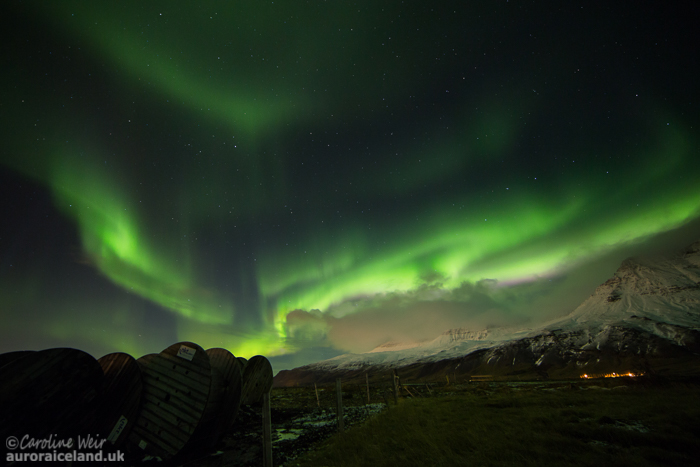
Image 10. 21:26 UTC. Taken at: ISO = 1600, f/2.8 @ 14 mm, blend, exposure on sky = 3.2 sec. Looking north-west.
After 21:28 UTC there was no more pink to the eye, but the aurora remained strong and bright green in colour to the eye with a continuous steady movement in its shape and location. Image 12 shows a nice rayed band of aurora to the north-east, where an approaching cloud bank can also be seen.
Images 13 to 15 were taken during the last period of moderate to strong activity by eye, showing bands of green aurora extending from the north and overhead and some purple ray tops on the camera.
After 21:55 UTC the activity for the remainder of the time that I was out (until 23:00) was generally weak, with brief periods of moderate activity where tall rays appeared. In general, all of this remaining activity was to the north, although a narrow and weak band of aurora kept appearing and disappearing directly overhead. The three images below (16 to 18) were taken over this period of weaker activity and, when compared with those taken earlier in the night, clearly demonstrate the difference to the naked eye/camera of strong versus a weak aurora activity.

